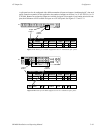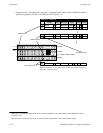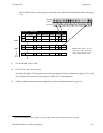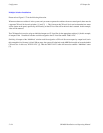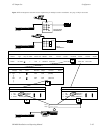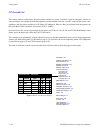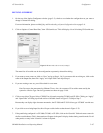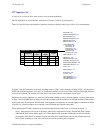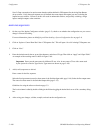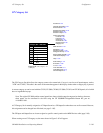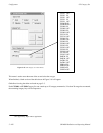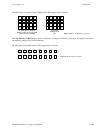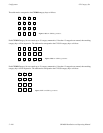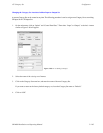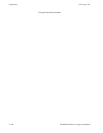
Configurator
CP Sequence Set
5−99CM 4000 Installation and Operating Manual
CP Sequence Set
A sequence is a switch of one or more sources to one or more destinations.
The CP 3000 panel can accommodate a maximum of 25 events (switches) in one sequence.
There is no specific limit to the number of sequences, but due to memory restrictions a limit of 16 is recommended.
Figure 5−80. CP sequence set (example).
1
Sequence Set − KXYZ−SEQ
Sequence
SEQ1
Input
VT01
Levels
YYYY
2
3
4
SEQ1 VC01 YYYY
SEQ1 VC02 YYYY
SEQ2 CAM1 YNNN
Output
PRDA
PRDB
PRDC
MON1
...
...
...
...
Logical Logical
Password 5−22
Network Description 5−27
Serial Protocol 5−30
Switcher Description 5−35
Switcher Input 5−48
Switcher Output 5−55
Control Panel Sets
Level set 5−58
Input set 5−62
Output set 5−78
Override set 5−96
Sequence set
Category set 5−101
MPK Devices 5−107
Machines 5−135
Machine Control 5−139
Delegation Groups 5−149
Status Display Header 5−150
VGA Status Display 5−151
Tally 5−152
Path Finding 5−174
Exclusion 5−188
Y Line 5−189
Time Standard G−11
Video Reference G−14
CM VGA Options H−1
In Figure 5−80, the first three rows show the switching events in “Seq1.” In this example, selecting “SEQ1” will cause three
VTRs to be switched into inputs A, B, and C of a production switcher. All four levels (video, audio left, audio right, and time
code) will be switched. The switches will take place in the vertical interval at maximum system speed.
Sequences are stored as sequence sets; these sets can be made available to some or all control panels. For the system shown
on page 5−89 (on the MPK Devices menu), the set in this example would be available to all CP 3000 Switcher Control Panels
in the system since all of them use “KXYZ−SEQ” as the sequence set. Sequences can include outputs not otherwise available
to a panel (i.e., when the outputs are not entered on the CP Output Set assigned to the panel).
When operating the CP 3000, sequences are accessed through the Menu and F keys, as described on page 6−17.
Note 1: Data matrixes can be part of sequences when used in conjunction with the “DM 400 Off Time” feature
(DM 400 Off Time is described on page 5−47). There should not be more than 25 DM 400 safe off time switches
per sequence. Safe off time in sequences must be used with care as specifying too short of a safe off time may result
in the switch occurring too soon; this could result in switches occurring out of sequence.



